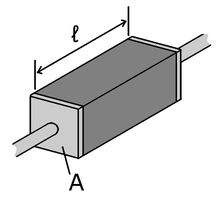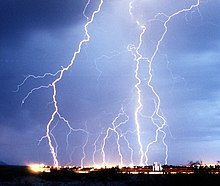
An
electric guitar is a
guitar that uses a
pickup to convert the vibration of its strings into electrical impulses. The most common guitar pickup uses the principle of direct
electromagnetic induction. The signal generated by an electric guitar is too weak to drive a
loudspeaker, so it is
amplified
before sending it to a loudspeaker. Since the output of an electric
guitar is an electric signal, the signal may easily be altered using
electronic circuits to add "color" to the sound. Often the signal is
modified using
effects such as
reverb and
distortion.
Invented in 1931, the electric guitar became a necessity as
jazz musicians sought to amplify their sound in the
big band format. During the 1950s and 1960s, the electric guitar became the most important instrument in
pop music.
[1]
It has evolved into a stringed musical instrument that is capable of a
multitude of sounds and styles. It served as a major component in the
development of
rock and roll and many other genres of music.













